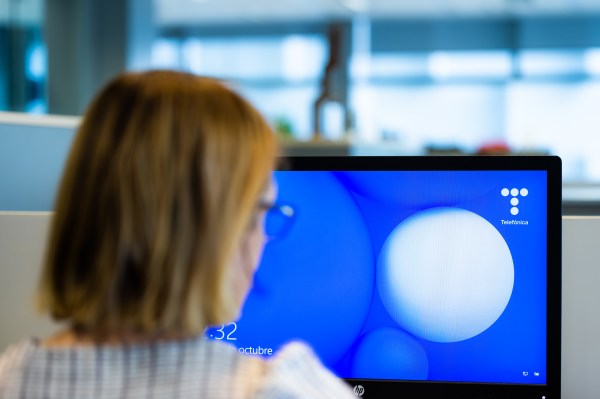Human beings leave a footprint on the planet with every step they take. Every day, people carry out a large number of activities that can leave a more or less lasting trace. One of them is the use of mobile phones. But there are also simple decisions that make that footprint less deep.
The natural disasters that sweep the planet from north to south, the disappearance of biodiversity and the latest pandemic caused by COVID-19 are a clear reflection of climate change. It is a trend that can be changed with each action, people can become aware of and work to curb these disturbances. It is all about changing small aspects on a day-to-day basis.
Today it would be very difficult to live without a smartphone. It has become an essential tool in the workplace, but also in the social and even in the health areas. Working from anywhere in the world, connecting with loved ones or having a video conference with a medical specialist is now normal.
Improved telecommunications and even improved mobile devices are evidence of progress: connectivity, integration and even the creation of new services and products. But the use of these little gems also has an impact on the environment, both in connection with their manufacture and in the treatment of the waste they generate.
Manufacturing with a footprint
According to data provided by the environmental NGO Greenpeace, more than 7 billion smartphones were manufactured worldwide between 2007 and 2017. This large number of machines leads to a drain on natural resources because the manufacturing processes are what produce the largest carbon footprint due to, among other things, mining. Gold, silver, copper, cobalt and aluminium are some of the minerals used.
All these elements can be recovered and reused. There is no need to continue extracting natural resources that are by no means infinite.
Other components necessary for the manufacture of these devices are the so-called rare earths: the famous coltan; lithium, used for battery manufacture; plastic, for non-aluminium casings, and many more – up to around 60 elements in total.
Not to mention water consumption, which is a significant issue and leaves behind a considerable water footprint. For example, producing a microchip for any electronic device requires about 130 litres of water, and manufacturing a smartphone up to 12,000 litres.
New sustainable standard
Civil society has long been changing the way it relates to nature, people, etc., and technology cannot escape new citizen demands. Knowing the manufacturing processes, components and also the efficiency characteristics of the devices is imperative.
For this reason, a new labelling system for mobile devices called ‘Eco Rating’ has been launched. This initiative aims to help consumers identify and compare the most environmentally friendly mobile phones, and to encourage manufacturers to reduce the environmental impact of their devices.
Eco Rating was first launched in 2012 in the UK by the carrier O2, which developed this certification system together with Forum for the Future. Since then, other companies have joined the initiative, including Latin American ones, and it now has the support of five of Europe’s leading mobile carriers: Deutsche Telekom, Orange, Telefónica (operating under the O2 and Movistar brands), Telia Company and Vodafone.
The new mobile phone Eco Rating scheme launched across Europe is set to roll out globally after the five operators behind the initiative expanded their initial agreement to encourage operators worldwide to participate.
Other industry-related experts are also involved in this labelling scheme, bringing all their knowledge and best practice experience from previous environmental labelling initiatives, as well as the use of the latest EU, ITU-T, ETSI and ISO standards and guidelines. New parameters are being introduced where appropriate, and IHOBE (a publicly-owned agency specialising in economic development, sustainability and the environment) is providing technical supervision.
How can impact be measured?
In order to measure said environmental impact, information provided by the device manufacturers themselves is used, and 19 different criteria are assessed in order to produce a single score. It is something similar to the energy rating of household appliances.
Eco Rating looks at characteristics such as durability, based on aspects such as robustness and battery life. It also scores the ease of repair of the device and the complementary actions that could increase the product’s useful life. Recyclability looks at each phone to see how feasible it is to disassemble and separate components and have them properly recycled.
Other sustainability criteria it assesses are climate efficiency, which takes into account the greenhouse gas emissions associated with the device throughout its life cycle; and finally resource efficiency, an aspect that assesses the impact caused by the consumption of raw materials used in device manufacturing in relation to the exploitation of resources, e.g. gold used in the manufacture of electronic components. In both cases, the higher the score, the lower the impact.
This label has been updated and has evolved to collect robust and accurate information on the environmental impact of mobile phones, both smart and basic, in relation to their production, use, transport, and disposal. Eco Rating provides carriers and customers with a wide range of ratings to help identify and order more environmentally friendly products.
Such initiatives provide users with the information they need to make the best decisions and they encourage industry to develop innovations aimed at promoting the sustainability of their products.











